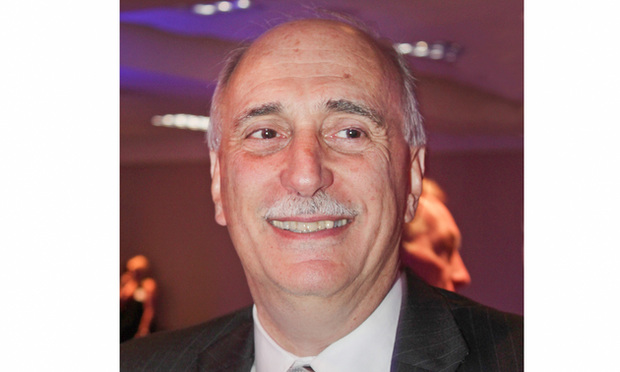Class Cert Denied in Property Damage Suit vs. Pratt & Whitney
The case was about property values, but 10 of the class representatives are also individual plaintiffs in separate personal injury lawsuits alleging family members had developed brain cancer as a result of exposure to contaminants in the environment.
May 03, 2018 at 07:10 PM
5 minute read
 U.S. District Judge Kenneth Marra of the Southern District of Florida.
U.S. District Judge Kenneth Marra of the Southern District of Florida. A Florida federal judge has denied certification of a class in litigation worth a claimed $1 billion by Palm Beach County residents who said their property values plummeted thanks to pollution from a nearby Pratt & Whitney plant.
The homeowners alleged industrial contamination affected values in a residential community outside of Palm Beach called “the Acreage.” The putative class action named United Technologies Corp. and its subsidiary, Pratt & Whitney Group, owner of a rocket and aerospace testing and manufacturing plant situated north of the community.
Ten of the class representatives are also individual plaintiffs in separate personal injury lawsuits alleging family members had developed brain cancer as a result of exposure to contaminants on the property.
“All of plaintiffs' tort claims are anchored in the contention that contamination from the Pratt & Whitney facility has created an 'environmental stigma' which clouds their properties and impairs their property values,” U.S. District Judge Kenneth Marra of the Southern District of Florida wrote in an order released Wednesday.
“These claims certainly rely on some measure of common proof,” which he said includes Pratt & Whitney's history of aerospace manufacturing at the facility dating back to 1950, use of licensed nuclear materials there, chemical properties, hazards and toxicity of contaminants released into groundwater and air and soil, waste disposal practices, and the potential for off-site migration resulting in contamination of surrounding properties five to 15 miles away for years after Pratt & Whitney remediated the property and ceased the alleged improper disposal practices.
“Regardless of how these common questions are resolved, the existence and degree of Pratt & Whitney's liability to a particular plaintiff will turn on the following individual-specific questions,” Marra said: whether that property is actually contaminated; whether the source of those contaminants is Pratt & Whitney; whether the contamination is sufficiently severe to reduce the property's value and to what extent; whether the property is contaminated by toxins other than those released by Pratt & Whitney; whether each plaintiff acquired the property before or after the alleged diminution in value occurred; and when each plaintiff was first on notice of the contamination.
“So, while there will be some common methods of proof, such as defendant's disposal practices, migration pathways, and properties of released contaminants, it is likely common liability issues will not predominate in this case,” Marra said. He added that the plaintiffs “have not met their burden proving a class action is appropriate,” and said their proposed class definition is overbroad and unproven.
The defense team greeted the ruling as “an important step toward the final dismissal of the unfounded claims made by these plaintiffs against Pratt & Whitney,” said Sean Gallagher, a partner with Bartlit Beck Herman Palenchar & Scott in Chicago.
“The issues in the case were very complex and our challenge was first to get the judge's ear and then to tell a simple story that cut through the plaintiffs' rhetoric,” Gallagher said. “We got that chance in a week-long evidentiary hearing, largely on cross-examination of the plaintiffs' experts, during which we were able to establish the flaws in their case. You see that in the court's ruling that the plaintiffs' theory is 'fundamentally flawed.'”
The company released a statement through a spokesman, denying liability and pointing to portions of Marra's ruling.
“As we have repeatedly said over the past eight years since these cases were first filed, there is no credible scientific basis to support any allegation that contaminants from Pratt & Whitney's West Palm Beach operation have reached the Acreage community (by groundwater, truck or otherwise), much less that they pose any risk to residents in the Acreage,” the company said. The statement added that the plaintiffs, according to the judge, “based their claims on the mere 'perception' of contamination at Pratt & Whitney's facility, without evidence that Pratt & Whitney has done anything that creates any actual threat to the health of people who reside at least five miles away in the Acreage community. “
The company also lauded the judge's notation that he observed “no evidence of area-wide contamination.”
Marra said his order was based on a five-day evidentiary hearing in January, plus written summations and proposed findings from both sides, as well as a review of the complaint, the briefs and the law.
The plaintiffs' team included: Darren Robert Latham, John Scarola and Mara Ritchie Poncy Hatfield of Searcy Denney Scarola Barnhart & Shipley in West Palm Beach, plus Bryan Scott Gowdy of Creed & Gowdy in Jacksonville.
“Obviously, we thought the best way to go was class certification,” Hatfield said. But she said the judge gave “a very extensive hearing” and showed concerns for the issues involved.
Hatfield said her team is also handling 22 brain cancer personal injury cases for some of the same clients, pending before the same judge.
She added, “We're prepared to go forward with the individual cases.”
This content has been archived. It is available through our partners, LexisNexis® and Bloomberg Law.
To view this content, please continue to their sites.
Not a Lexis Subscriber?
Subscribe Now
Not a Bloomberg Law Subscriber?
Subscribe Now
NOT FOR REPRINT
© 2025 ALM Global, LLC, All Rights Reserved. Request academic re-use from www.copyright.com. All other uses, submit a request to [email protected]. For more information visit Asset & Logo Licensing.
You Might Like
View All

43 States Reach $700 Million Settlement With J&J in Talc Product Lawsuits

DeSantis Signs Controversial Phosphogypsum, Local Ordinance Bills

Attorneys Probing 'Every Potential Avenue' Over Norfolk Southern Accident
6 minute readTrending Stories
- 1Big Law Firms Sheppard Mullin, Morgan Lewis and Baker Botts Add Partners in Houston
- 2Lack of Jurisdiction Dooms Child Sex Abuse Claim Against Archdiocese of Philadelphia, says NJ Supreme Court
- 3DC Lawsuits Seek to Prevent Mass Firings and Public Naming of FBI Agents
- 4Growth of California Firms Exceeded Expectations, Survey of Managing Partners Says
- 5Blank Rome Adds Life Sciences Trio From Reed Smith
Who Got The Work
J. Brugh Lower of Gibbons has entered an appearance for industrial equipment supplier Devco Corporation in a pending trademark infringement lawsuit. The suit, accusing the defendant of selling knock-off Graco products, was filed Dec. 18 in New Jersey District Court by Rivkin Radler on behalf of Graco Inc. and Graco Minnesota. The case, assigned to U.S. District Judge Zahid N. Quraishi, is 3:24-cv-11294, Graco Inc. et al v. Devco Corporation.
Who Got The Work
Rebecca Maller-Stein and Kent A. Yalowitz of Arnold & Porter Kaye Scholer have entered their appearances for Hanaco Venture Capital and its executives, Lior Prosor and David Frankel, in a pending securities lawsuit. The action, filed on Dec. 24 in New York Southern District Court by Zell, Aron & Co. on behalf of Goldeneye Advisors, accuses the defendants of negligently and fraudulently managing the plaintiff's $1 million investment. The case, assigned to U.S. District Judge Vernon S. Broderick, is 1:24-cv-09918, Goldeneye Advisors, LLC v. Hanaco Venture Capital, Ltd. et al.
Who Got The Work
Attorneys from A&O Shearman has stepped in as defense counsel for Toronto-Dominion Bank and other defendants in a pending securities class action. The suit, filed Dec. 11 in New York Southern District Court by Bleichmar Fonti & Auld, accuses the defendants of concealing the bank's 'pervasive' deficiencies in regards to its compliance with the Bank Secrecy Act and the quality of its anti-money laundering controls. The case, assigned to U.S. District Judge Arun Subramanian, is 1:24-cv-09445, Gonzalez v. The Toronto-Dominion Bank et al.
Who Got The Work
Crown Castle International, a Pennsylvania company providing shared communications infrastructure, has turned to Luke D. Wolf of Gordon Rees Scully Mansukhani to fend off a pending breach-of-contract lawsuit. The court action, filed Nov. 25 in Michigan Eastern District Court by Hooper Hathaway PC on behalf of The Town Residences LLC, accuses Crown Castle of failing to transfer approximately $30,000 in utility payments from T-Mobile in breach of a roof-top lease and assignment agreement. The case, assigned to U.S. District Judge Susan K. Declercq, is 2:24-cv-13131, The Town Residences LLC v. T-Mobile US, Inc. et al.
Who Got The Work
Wilfred P. Coronato and Daniel M. Schwartz of McCarter & English have stepped in as defense counsel to Electrolux Home Products Inc. in a pending product liability lawsuit. The court action, filed Nov. 26 in New York Eastern District Court by Poulos Lopiccolo PC and Nagel Rice LLP on behalf of David Stern, alleges that the defendant's refrigerators’ drawers and shelving repeatedly break and fall apart within months after purchase. The case, assigned to U.S. District Judge Joan M. Azrack, is 2:24-cv-08204, Stern v. Electrolux Home Products, Inc.
Featured Firms
Law Offices of Gary Martin Hays & Associates, P.C.
(470) 294-1674
Law Offices of Mark E. Salomone
(857) 444-6468
Smith & Hassler
(713) 739-1250






